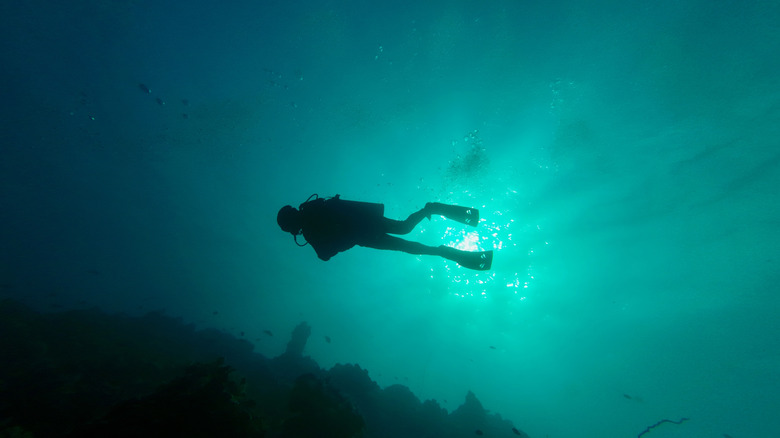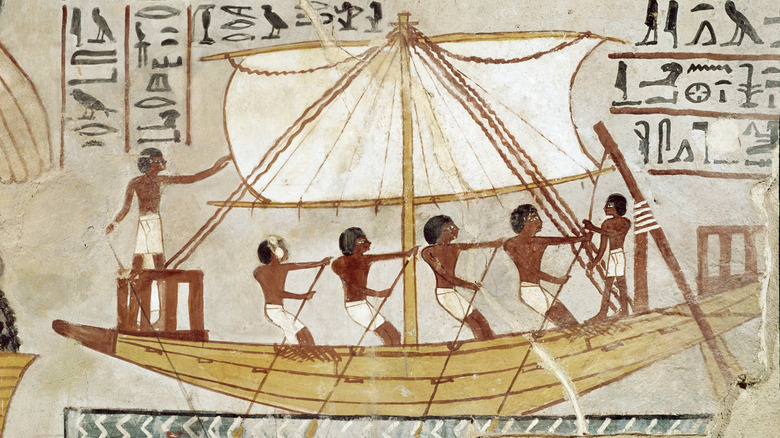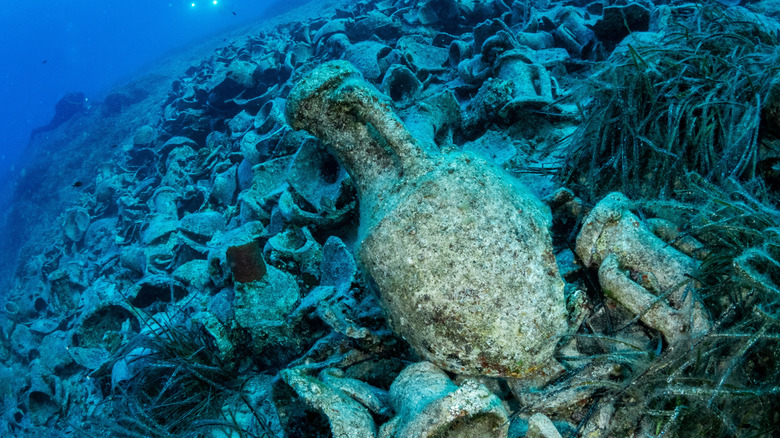The Ancient Egyptian Military Shipwreck That Will Take Us Hundreds Of Years To Explore
Long before Alexandria dominated the Mediterranean coast of Egypt, another city controlled the commerce and culture on the Nile: Thônis-Heracleion. The metropolis eventually disappeared beneath the sea in the eighth century C.E., ending its run as a hub for trade and ritual worship. It was lost to history for over a thousand years... until its rediscovery in 2001.
Now, more than two decades into its excavation, this submerged city has revealed one of its most interesting secrets yet: an ancient military vessel preserved beneath layers of sediment and debris. Moored beside the ruins of the Temple of Amun, this 80-foot-long military ship was crushed and entombed when the massive sanctuary collapsed around 140 B.C.E. (Not one of the largest ships in military history, but nevertheless: a hugely significant discovery.)
The force of that destruction buried the vessel under 16 feet of clay and masonry, where it remained undisturbed for more than two millennia. As it turns out, it'll take hundreds of years more to uncover it all. Preserving, documenting, and understanding what lies beneath all that compacted, hardened sediment is no easy feat. It demands painstaking excavation and conservation methods that have to move at a glacial pace for the safety and security of the artifacts.
The ancient Egyptian and Greek techniques used to make the ship
It wasn't until a joint Egyptian-French mission led by the European Institute for Underwater Archaeology (IEASM) that the remains came to light. Upon closer examination of their discovery, it became clear that the ship's construction reflects the multicultural layers of Thônis-Heracleion itself.
Built with a blend of Egyptian and Greek techniques, the vessel is made of recycled wood materials and mortise-and-tenon joints (a hallmark of classical shipbuilding that you could probably try yourself). This suggests it was constructed locally in Egypt. Its flat bottom and shallow keel were necessary for floating down the Nile's branching waterways as well as along the Mediterranean coast. It likely used oars and a big sail, too.
This hybrid craftsmanship is a reflection of the city's diverse population during the end of the Pharaonic era. By the turn of the fourth century B.C.E., Greek merchants had settled in Thônis-Heracleion and established sanctuaries and burial grounds around the existing Egyptian temples. When the temple collapsed, the remains of these structures mingled together as they piled up over the ship — fusing Greek and Egyptian history in the ruins.
Why will it take so long to explore the underwater ruins?
All the effort going into the excavation will be more than worth it by the end. Each delicate layer of clay and stone reveals new details about the long-lost tales of gods, empires, and the ships that once carried them. So far, excavations have already unearthed ritual objects, bronze coins from the reign of Ptolemy II, and Doric columns from a Greek temple. The rediscovery of a tablet in 2001 even resolved a centuries-old mystery: that the Greek Heracleion and the Egyptian Thônis were one and the same city.
As archaeologists continue to extract meaning from the wreck and the dozens of others in its vicinity, one thing is clear: this is no routine recovery mission. It is a slow and steady act to preserve the fragile ruins. We likely won't know everything that lies beneath for quite some time, but even now, the story of Thônis-Heracleion has already rewritten what we know about work and life in the ancient Egyptian world. It will no doubt continue to do so for generations to come.


